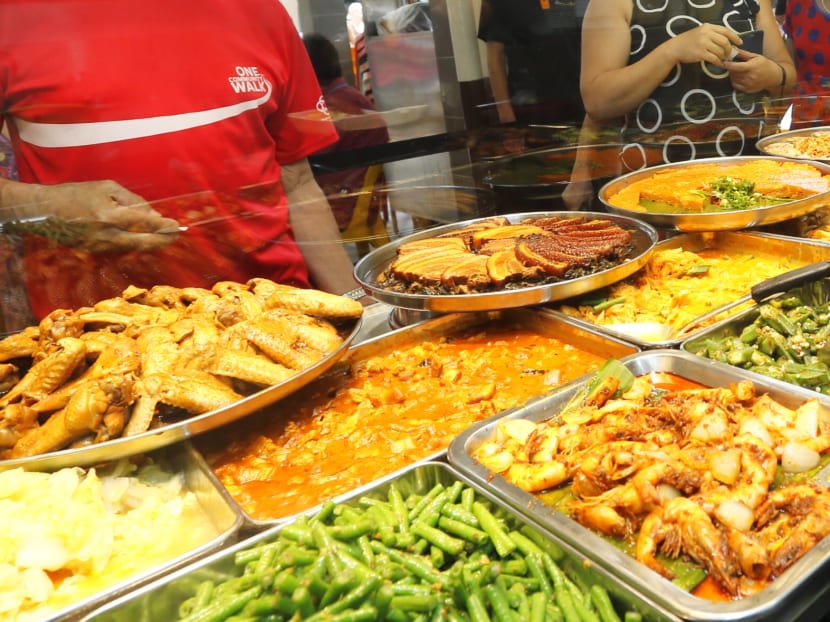10% of Singaporean households don’t eat enough to stay healthy, some have just a meal daily: Study
SINGAPORE — At least once in the past year, one in 10 Singaporean households did not have or was unsure of having access to enough food that was nutritious. And at least once a month, two out of five of these households experienced this.

Food insecurity is a “largely hidden problem” here, researchers said, and they defined it as when a household does not have, or is not confident of having, economic and physical access to food that allows them to lead a healthy lifestyle.
- 10 per cent of Singaporean households experienced food insecurity at least once last year
- 22 per cent of such households were receiving food support
- There were people surveyed who ate just one meal a day
- The most common reason for not having enough food was because they did not have enough money or have health issues
- Researchers recommend mapping out areas where these people live to give them more support
SINGAPORE — At least once in the past year, one in 10 Singaporean households did not have or was unsure of having access to enough food that was nutritious. And at least once a month, two out of five of these households experienced this.
Caught in this situation, only about two in 10 were receiving support in this area.
These were some of the findings released on Wednesday (Sept 16) from The Hunger Report 2019, a study done by a team of researchers from the Lien Centre for Social Innovation at the Singapore Management University (SMU).
It is the first in-depth, nationally representative study of food insecurity in Singapore, with a total of 1,206 households comprising both citizens and permanent residents surveyed between July and December last year, where one participant represented one household.
Food insecurity is a “largely hidden problem” here, the researchers said, and they defined it as when a household does not have, or is not confident of having, economic and physical access to food that allows them to lead a healthy lifestyle.
They also said that the findings revealed “a paradox” in society here. While the country has achieved food sufficiency and is ranked as the most food-secure nation in the world on the Global Food Security Index last year, there are people who still report severe levels of food insecurity.
Participants in the study who had food insecurity were more likely to eat one meal a day than those who were food-secure. For instance, 10 of the 13 participants who said that they ate just one meal a day were from food-insecure households.
Interviews were conducted with 20 food-insecure participants to get more insights into the problem.
The top reasons given for not having enough food were related to financial constraints, such as having to pay off mortgage and rent, job loss and health issues.
The study found that food-insecure households were more likely to reside in one- and two-room Housing and Development Board flats, and the heads of such households were less likely to have attained university-level education compared to those in food-secure households.
Food-insecure participants were also more likely to be less healthy. The study found that 37.2 per cent of the 126 moderately food-insecure participants and 32.9 per cent of the 79 severely food-insecure participants were in the high-risk overweight and underweight categories for their Body Mass Index (BMI) score, which measures body fat.
Those with BMI scores over 25 are considered to be overweight, which could lead to health issues such as stroke and high blood pressure. Those with scores under 18.5 are considered underweight, putting them at risk of nutritional deficiency diseases.
In comparison, 24.5 per cent of the 971 food-secure participants were in the high-risk category.
Participants were asked questions to determine if they were food-secure or -insecure. Households that had food insecurity issues were further categorised into moderate and severe.
A total of 1,067 households (or 89.5 per cent) were classified as food-secure, 83 (or 6.9 per cent) as moderately food-insecure and 42 (or 3.5 per cent) as severely food-insecure. These numbers were derived after unweighted samples from the initial results were weighted to represent Singapore’s housing distribution last year.
SUPPORT FOR HOUSEHOLDS
When it came to food aid, 45 out of 205 food-insecure households — or 22 per cent — were receiving food support at the time of the interview.
While those who received food aid said that it had a lasting improvement on their lives, 89 per cent said that they were dissatisfied with the support they received.
The researchers said that this was likely due to the sporadic nature of food assistance and the embarrassment that households face when seeking help.
Slightly more than 60 per cent of food-insecure households did not seek help, giving reasons such as embarrassment, being unaware of food aid, and believing that others needed the help more.
Those from food-secure households were less aware than food-insecure households of the problem of food insecurity. For instance, they were less likely than their food-insecure counterparts to believe that there were families in Singapore who could not get two nutritious meals a day.
When asked if the issue of food insecurity had worsened this year due to the Covid-19 pandemic, the research team told TODAY that it is not conducting any studies now but is interested in exploring this issue further.
Dr Dalvin Sidhu said: “We are expecting that the prevalence of food insecurity would have been exacerbated during the Covid-19 period.”
She is one of the researchers along with Ms Jinwen Chen and Dr Tania Nagpaul, who is no longer with SMU now.
RECOMMENDATIONS
To provide better support for such vulnerable households, the SMU report recommends mapping out areas to show where they live, to inform food aid organisations of where help is needed the most.
It also recommends more strategic coordination of food support at a national level, such as a collective network where various government ministries, non-profits and private sector companies may share information and pool resources to help segments in need of food.
There is certainly a need to drum up more awareness of food insecurity in Singapore to increase empathy and support for food-insecure individuals, the researchers said.
With many participants in the study indicating the cost of healthier food as a deterrent to choosing that option, the actual and perceived cost of healthy food should be addressed, they added.
This will ensure that campaigns to encourage healthy eating will make a real impact on the ground.








